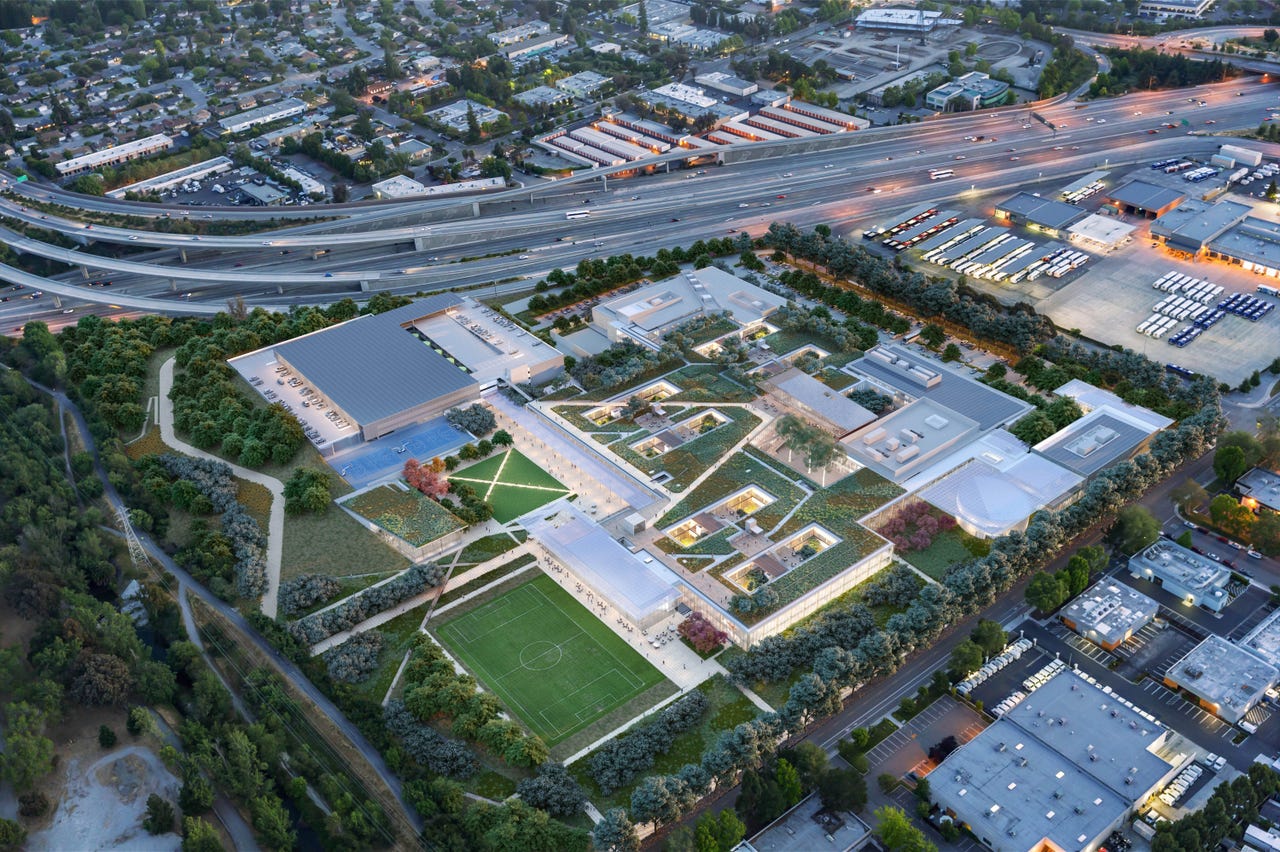Microsoft: This is what our revamped Silicon Valley campus will look like by 2020


A big part of Microsoft's project is to introduce a massive green roof and put its acres of surface parking under a soccer field.
Microsoft's soon-to-be revamped Silicon Valley office will be designed to entirely remove its reliance on water from municipal sources, except for drinking water and sinks.
More Microsoft
The Silicon Valley office renovation comes alongside Microsoft's much larger overhaul of its Redmond headquarters in Washington, which introduces new sports fields, walking tracks, and underground parking, and will have enough space for its current 47,000 employees plus 8,000 more.
Microsoft's 32-acre Silicon Valley campus in Mountain View is home to 2,000 employees who work on Outlook.com, PowerPoint, Xbox, and other products.
The renovation is expected to complete by December 2019 and modernizes work space of 643,000 square feet. The redevelopment adds 128,000 square feet to its existing 515,000 square foot campus, which has been in Silicon Valley since 1981.
The Windows maker is aiming for "net zero non-potable water certification" to minimize the campus' impact on already strained water resources in California, which are mostly dependent on water from the Sierra Nevada. The campus will be designed so that only drinking fountains and sinks will use water from municipal sources.
"One hundred percent of the buildings' non‑drinking water will come from rainfall or on-site recycled water. This will be a first in Silicon Valley and it shows a commitment to innovation and sustainability," said Pauline Souza, from WRNS Studio Architecture & Planning, the company that designed Microsoft's new campus.
As Microsoft revealed in council plans last year a big part of the project is also to introduce a massive green roof and move its acres of surface parking to beneath a soccer field.
The water objective is based on the idea of using non-potable water more than once. It involves harvesting rainwater and collecting storm water and waste water, which all gets processed at an onsite wastewater treatment plant for reuse.
The rainwater will be collected from roofs and solar panels for use on the landscape and in restrooms. All water from kitchens and restrooms will be treated for use in irrigation and toilets. Meanwhile captured storm water will be used for the living roof, then treated by 'rain gardens' that run into the nearby Steves Creek area.
The plan will help it reduce water consumption by five percent. This no doubt should help Microsoft minimize the impact of its new green spaces and the additional office space it's building. According to Microsoft, it will build a four-acre roof that reintroduces native ecology and promotes species diversification in the area next to the Stevens Creek habitat.
Of course, it wouldn't be a Silicon Valley tech campus without modern comforts, such as a health-focused restaurant, athletic fields, and a new fitness facilities. It will also have a new conference center, theater, and Microsoft Technology Center.
Previous and related coverage
Microsoft: We're razing our Redmond campus to build a mini city
No more cars, new soccer and cricket fields, cafes, bike tracks, bridges, light rail, and more.
Microsoft just built these Wi-Fi tree houses so staff can connect with nature
Working in Redmond's Pacific Northwest Douglas firs to boost productivity and creativity for Microsoft employees.
Read more on Microsoft
- Microsoft opens up its Windows 10 Whiteboard app for public preview
- Microsoft, HP, Asus launch the great Windows on ARM, Qualcomm experiment: Here are the key questions
- Microsoft Azure is first global cloud provider to deploy AMD EPYC processors
- Microsoft delivers public preview of its new Azure IoT software as a service
- Bill Gates thinks you should read these 5 books (CNET)
- Seven end-of-year maintenance tips for Windows client systems (TechRepublic)